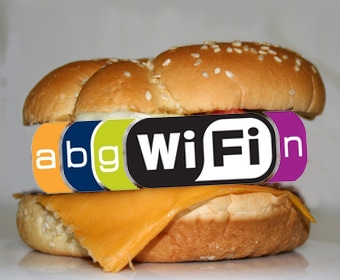A survey of the UK's wifi usage, commissioned by industry watchdog Ofcom, has discovered that many of the problems commonly associated with wifi connectivity are in fact due to interference between devices and not spectrum congestion as often thought.
May 13, 2009

A survey of the UK’s wifi usage, commissioned by industry watchdog Ofcom, has discovered that many of the problems commonly associated with wifi connectivity are in fact due to interference between devices and not spectrum congestion as often thought.
The investigation, carried out by research firm Mass Consultants on behalf of Ofcom, looked at the Licence-Exempt (LE) band areas of the spectrum that are very lightly regulated by the UK regulator, specifically the 2.4 GHz band, which extends from 2.4 GHz to 2.483 GHz.
Users do not need licences to transmit in these bands, which has led to diverse applications and services relying on these bands. As a result, Ofcom is investigating whether these existing bands are sufficient to meet the current demand for services.
The research unearthed a wide variety of problems encountered by users, many of which are due to causes other than spectrum issues, such as problems with the wired internet and device configuration errors. But when the problems are spectrum-related they tend to be due to interference between devices rather than congestion, as was initially believed.
This is especially true in built up areas, such as the centre of London, where the demands on this band are much higher than other locations. Common causes of interference in the wifi band are baby monitors, audio video transmitters, and microwave ovens.
Mass Consultants found that wifi networks are actually capable of carrying much more traffic than they currently do, but interference between different types of devices is commonplace, leading to loss of service quality for many users.
“It only requires a single device, such as an analogue video sender, to severely affect wifi services within a short range, such that a single large building or cluster of houses can experience difficulties with using a single wifi channel,” the firm said.
By way of a solution, interference could be reduced by enforcing coexistence criteria via the standardisation committees, but in the short term there are a lot of radio types in use and the interference problem is predicted to continue to increase.
On the findings, Ofcom said that it thinks a certification scheme is highly desirable – some non wifii devices already sport ‘Wifi-friendly’ claims on their datasheets, but the regulator proposes extending this concept to a ‘2.4 GHz friendly’ logo, which would help drive acceptance of technologies in this band.
About the Author(s)
You May Also Like








.png?width=300&auto=webp&quality=80&disable=upscale)


_1.jpg?width=300&auto=webp&quality=80&disable=upscale)


.png?width=800&auto=webp&quality=80&disable=upscale)